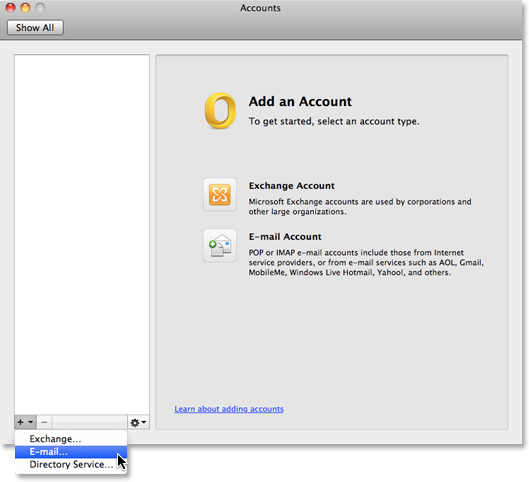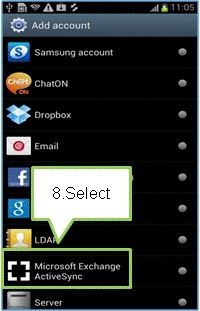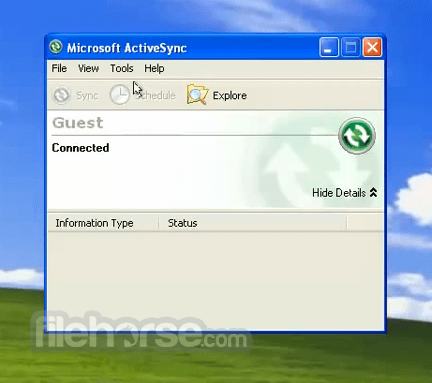Microsoft Activesync For Mac
Microsoft ActiveSync Description. ActiveSync is a synchronization program developed by Microsoft. It allows a mobile device to be synchronised with either a desktop PC, or a serve. ActiveSync allows a mobile device to be synchronized with either a desktop PC or a server running a compatible software product including Microsoft Exchange Server, Axigen, Horde, IceWarp Server, Kerio Connect, Kolab, MDaemon, Novell GroupWise, Tine 2.0, Scalix, Zarafa/Kopano via Z-push, or Zimbra. On desktops, ActiveSync synchronizes emails, calendar, contacts and tasks with.
ActiveSync provides a great synchronization experience with Windows-based PCs and Microsoft Outlook right out of the box. ActiveSync acts as the gateway between your Windows-based PC and Windows. This test will check the external domain name settings for your verified domain in Office 365. The test will look for issues with mail delivery such as not receiving incoming email from the Internet and Outlook client connectivity issues that involve connecting to Outlook and Exchange Online.
Download and install the GSSMO tool by Google to use Microsoft® Outlook® effectively with G Suite.
| Developer(s) | Microsoft |
|---|---|
| Initial release | September 10, 1996; 24 years ago |
| Stable release | 4.5.5096 / February 13, 2007; 13 years ago |
| Operating system | Windows 9x, Windows NT 4.0, Windows 2000, Windows XP |
| Successor | Windows Mobile Device Center and Zune Software |
| Website | www.microsoft.com/windowsmobile/activesync/default.mspx |
ActiveSync is a mobile data synchronizationapp developed by Microsoft, originally released in 1996. It synchronizes data with handheld devices and desktop computers. In the Windows Task Manager, the associated process is called wcescomm.exe.
Overview[edit]
ActiveSync allows a mobile device to be synchronized with either a desktop PC or a server running a compatible software product including Microsoft Exchange Server, Axigen, Horde, IceWarp Server, Kerio Connect, Kolab, MDaemon, Novell GroupWise, Tine 2.0, Scalix, Zarafa/Kopano via Z-push, or Zimbra.

On desktops, ActiveSync synchronizes emails, calendar, contacts and tasks with Microsoft Outlook, along with Internet bookmarks and files. ActiveSync does not support all features of Outlook. For instance, contacts grouped into subfolders are not transferred. Only the contacts which are not in a subfolder are synchronized. In case of Exchange Server, only emails, calendar, contacts and tasks may be synchronized.
ActiveSync also provides for the manual transfer of files to a mobile device, along with limited backup functionality, and the ability to install and uninstall mobile device applications.
Microsoft Outlook Mac Os Download
Supported mobile devices include PDAs or smartphones running Windows Mobile, Windows CE,[1] or BlackBerry 10 or iPhone but not the older BlackBerry versions, Palm OS and Symbian platforms. Windows Phone 7 doesn't support desktop ActiveSync synchronization.[2]
Starting with Windows Vista, ActiveSync has been replaced with the Windows Mobile Device Center, which is included as part of the operating system.[3]
Release history[edit]
| Version | Operating systems | Release date | Major changes |
|---|---|---|---|
| 1.0 | Windows 95 | 1996-09-10 |
|
| 1.1.7077 | 1997-03-19 |
| |
| 2.0 | Fall 1997 |
| |
| 2.1 | 1998-02 |
| |
| 2.2 | 1998-09 |
| |
| 3.0.0.9204 | 1999-08-16 |
| |
| 3.1.9386 | 1999-11-24 |
| |
| 3.1.9439 | ? |
| |
| 3.1.9587 | 2001-07-31 |
| |
| 3.5.1176 | 2001-08-06 |
| |
| 3.5.12007 | 2002-03-01 |
| |
| 3.6.2148 | 2002-11 |
| |
| 3.7.3083 | 2003-05-06 |
| |
| 3.7.1.3244 | 2003-10-10 |
| |
| 3.7.1.4034 | 2004-03-26 |
| |
| 3.8.0.5004 | 2005-01-06 |
| |
| 4.0.4343 | 2005 |
| |
| 4.0.4358 | 2005 |
| |
| 4.1.0.4841 | 2005-11-18 |
| |
| 4.2.0.4876 | 2006-06-06 |
| |
| 4.5.5096 | 2007-02-13 |
|
See also[edit]
- Software
- Devices
- Concepts
- Protocols
References[edit]
- ^'Exchange Server 2007 Support for Mobile Devices'. Microsoft Exchange portal. Microsoft. 27 March 2007. Archived from the original on 1 May 2008. Retrieved 20 November 2012.
- ^Lein, Adam Z. (17 September 2010). 'How to Sync Windows Phone 7 with Outlook'. Pocketnow. Archived from the original on 6 July 2013. Retrieved 20 November 2012.
- ^Snyder, Derek (2006). 'Windows Mobile Enterprise Features'(PDF). Mobile & Embedded DevCon 2006. Microsoft. Retrieved 20 November 2012.[dead link]
Microsoft Activesync For Android
External links[edit]

Microsoft Activesync For Mac Shortcut

